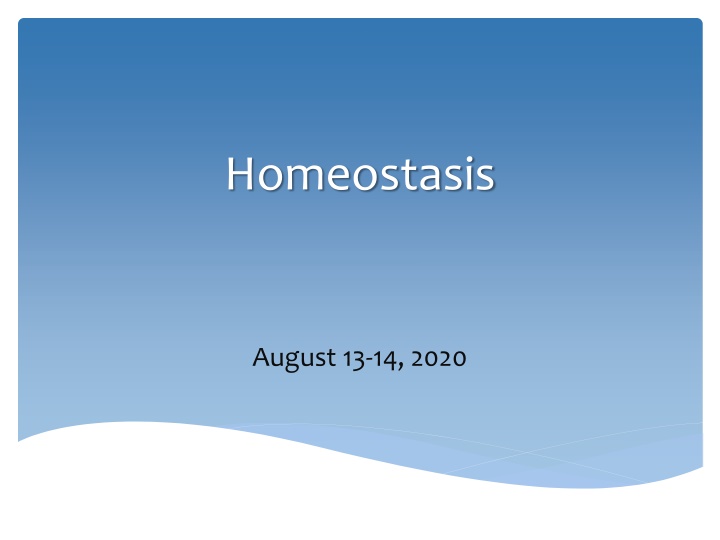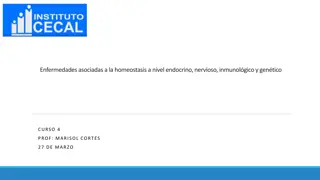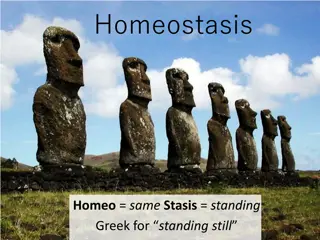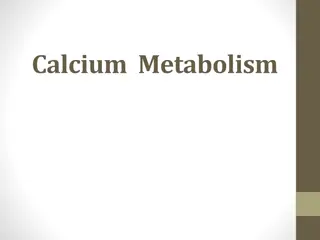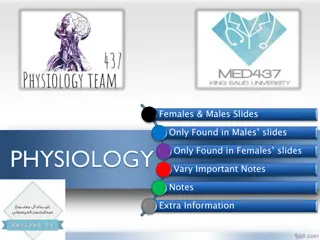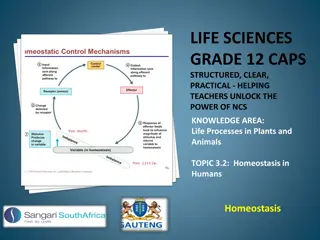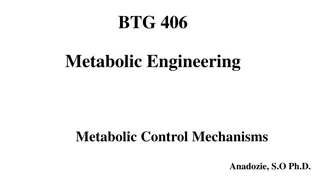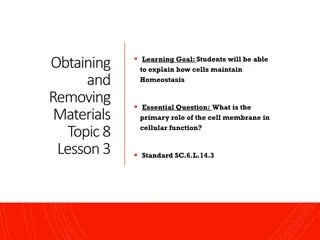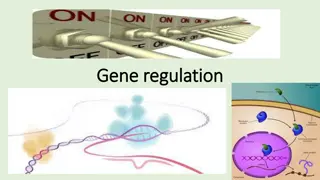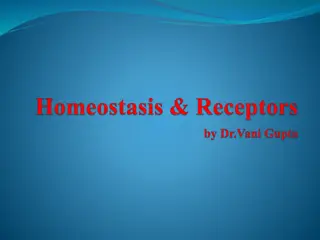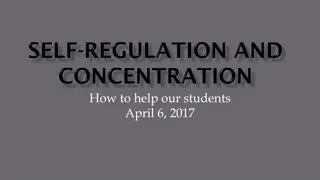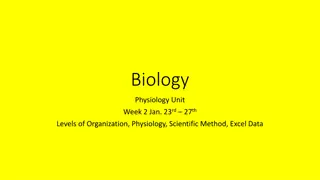Homeostasis: The Dynamic Regulation of Internal Conditions
Homeostasis is the body's vital process of maintaining stable internal conditions. This includes regulating various variables such as temperature, blood pH, sugar levels, water balance, blood pressure, and ion balance. Explore examples and control mechanisms analogies in this informative collection of images and discussions.
Download Presentation

Please find below an Image/Link to download the presentation.
The content on the website is provided AS IS for your information and personal use only. It may not be sold, licensed, or shared on other websites without obtaining consent from the author.If you encounter any issues during the download, it is possible that the publisher has removed the file from their server.
You are allowed to download the files provided on this website for personal or commercial use, subject to the condition that they are used lawfully. All files are the property of their respective owners.
The content on the website is provided AS IS for your information and personal use only. It may not be sold, licensed, or shared on other websites without obtaining consent from the author.
E N D
Presentation Transcript
Homeostasis August 13-14, 2020
Homeostasis The maintenance of relatively stable internal conditions Dynamic process the body is constantly regulating to keep conditions within acceptable ranges
Examples of Homeostasis Many variables are maintained by homeostasis. What examples can you think of?
Examples of Homeostasis Many variables are maintained by homeostasis. Examples include: Temperature Blood pH Blood sugar Water balance Blood pressure Ion balance
Homeostatic Control Mechanisms Analogies Thermostat Cruise control others?
http://exercisephysiologist.files.wordpress.com/2012/02/thermoregulation-feedback.jpghttp://exercisephysiologist.files.wordpress.com/2012/02/thermoregulation-feedback.jpg
http://exercisephysiologist.files.wordpress.com/2012/02/thermoregulation-feedback.jpghttp://exercisephysiologist.files.wordpress.com/2012/02/thermoregulation-feedback.jpg What is the ... Variable? Stimulus? Receptor? Control center? Effector? (some may not be listed on chart)
http://exercisephysiologist.files.wordpress.com/2012/02/thermoregulation-feedback.jpghttp://exercisephysiologist.files.wordpress.com/2012/02/thermoregulation-feedback.jpg What is the ... Variable? Stimulus? Receptor? Control center? Receptors aren t shown on this picture, but there are two sets of thermoreceptors: some in the hypothalamus to measure internal temperature , and some in the skin to measure external temperature Effector?
You do: What is the ... Variable? Stimulus? Receptor? Control center? Effector?
Receptors arent shown again, but there are two types of calcium receptors scattered throughout the body You do: What is the ... Variable? Stimulus? Receptor? Control center? Effector?
Negative Feedback Mechanisms Most homeostatic mechanisms are examples of negative feedback. In negative feedback, the output acts to change the direction of the stimulus. Example: If the body is hot, the hypothalamus will activate the sweat glands and dilate the blood vessels (the two outputs) both of which will act to reduce the body temperature.
Positive Feedback Mechanisms Some processes in the body are positive feedback mechanisms. In positive feedback, the output enhances the stimulus
Positive or Negative Feedback? Blood Clotting Blood Pressure
Positive or Negative Feedback? Blood Clotting Blood Pressure Positive The output (platelet adhering) increases the original stimulus (platelet-attracting chemical) Negative The output (decreased heart rate / increased diameter) decreases the original stimulus (high blood pressure)
Positive and Negative Feedback Come up with examples and non-examples of negative and positive feedback. (For non-examples, I want something that at first glance might seem like positive or negative feedback, but isn t). What is it that distinguishes the true examples from the non-examples?
Homeostatic Imbalance Most disease is caused by a disturbance of homeostatic mechanisms known as homeostatic imbalance. Homeostatic imbalance can result from Aging Genetic mutations Pathogens Environmental factors
Homework Chapter 1 Summary due next class First quiz in two classes!
Closure What are your key takeaways from our objectives? What was our LP and how did we use it? How does what we did today relate to our significant concept?
Exit Ticket Study this diagram. 1) What is the stimulus? 2) What are the effectors? 3) Is this + or feedback, and how can you tell?
Exit Ticket Identify the body system to which each organ belongs 4) Pancreas 5) Liver Ex) Which system cleans and returns body fluids to the blood stream?
